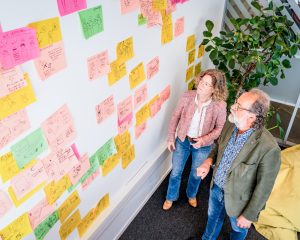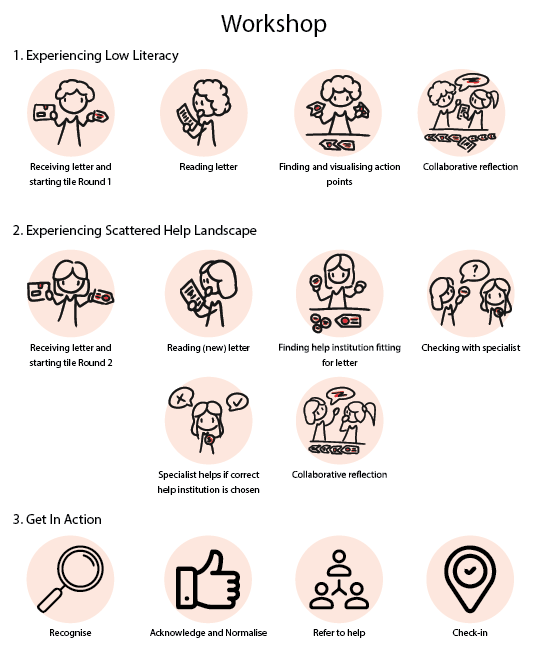Eindhoven Engine at Dutch Design Week 2024
During the week of October 19 to 27, the annual Dutch Design Week took place. From Monday to Friday during DDW, Eindhoven Engine conducted the workshop ‘Aahh, I don’t get it!!’ at the Plug-in Pavilion on Strijp-S.
As part of the Inclusive Society program, Eindhoven Engine addresses the societal challenge that 2.5 million people struggle with reading, writing, arithmetic, and/or digital skills, which affects them daily. We received over 100 registrations, and ultimately, 123 participants attended, spread over the five days. We are very pleased with the turnout and are happy to have inspired so many people and raised awareness!
- More about Inclusive Society
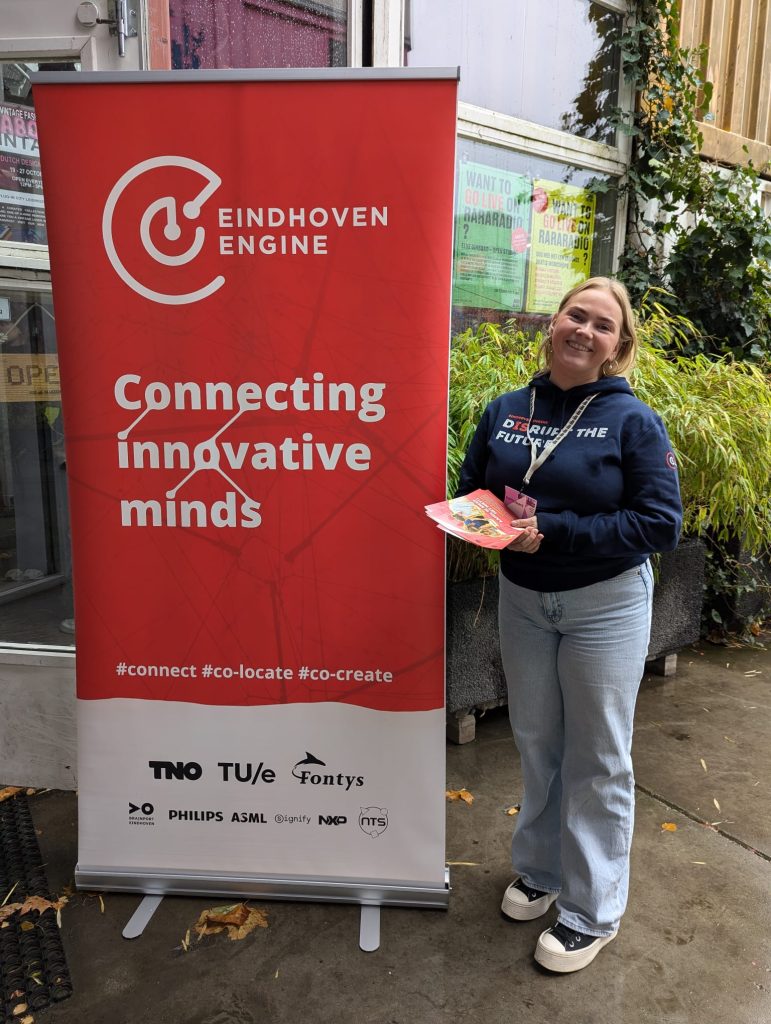
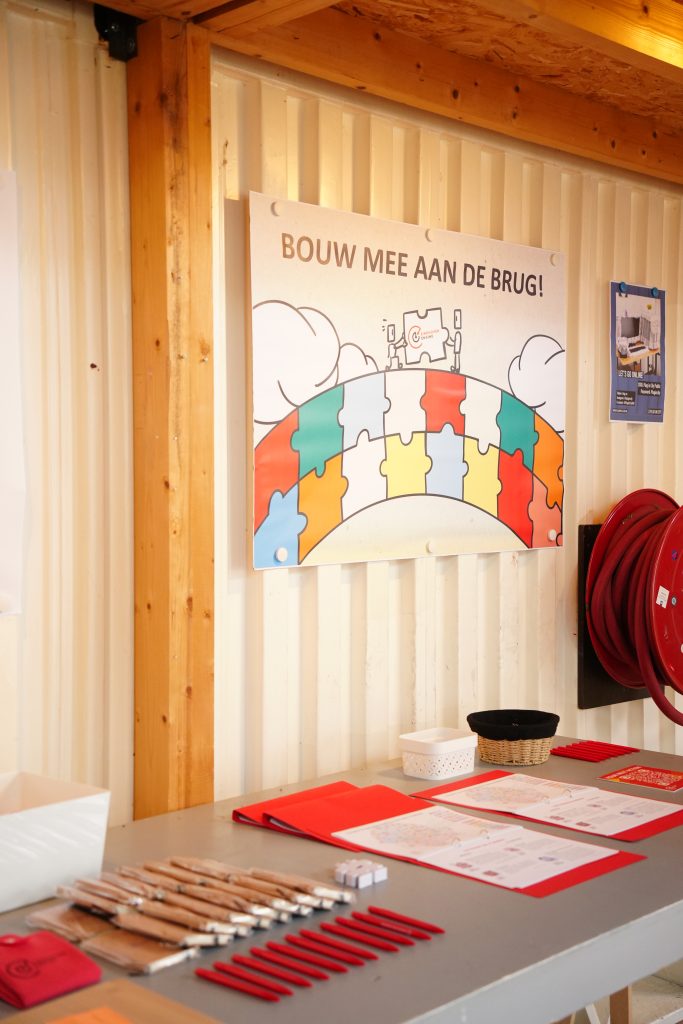
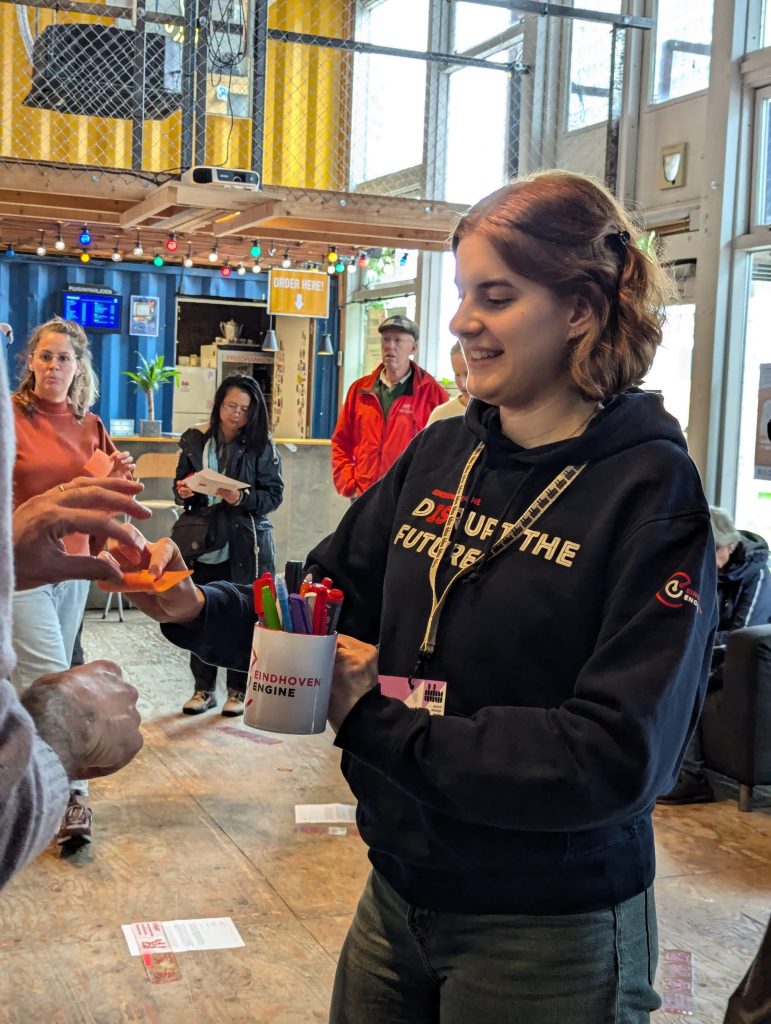
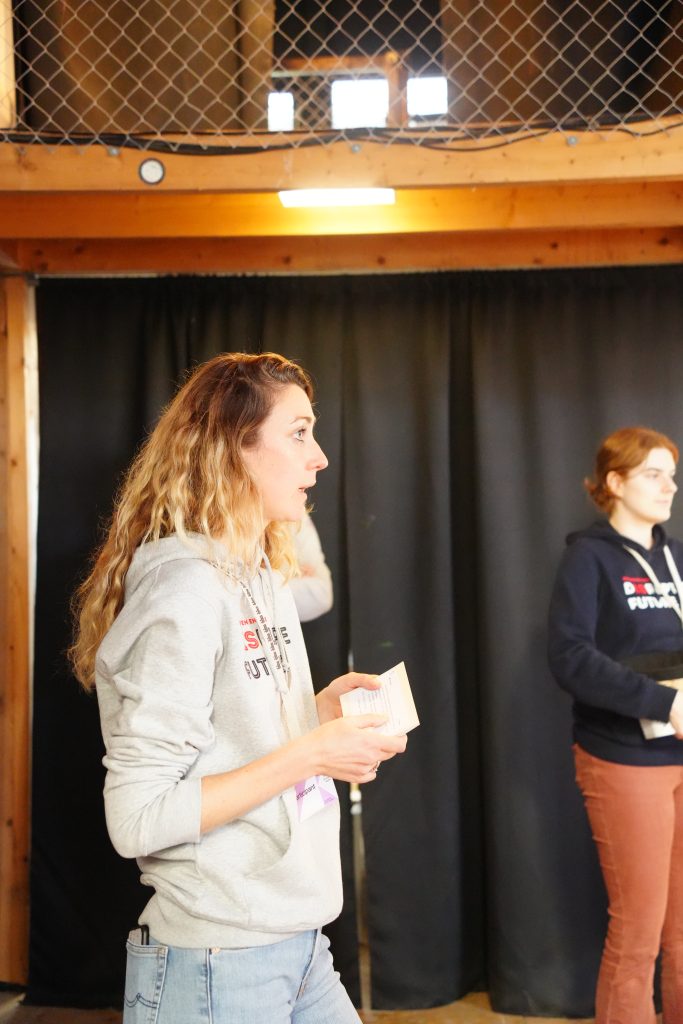
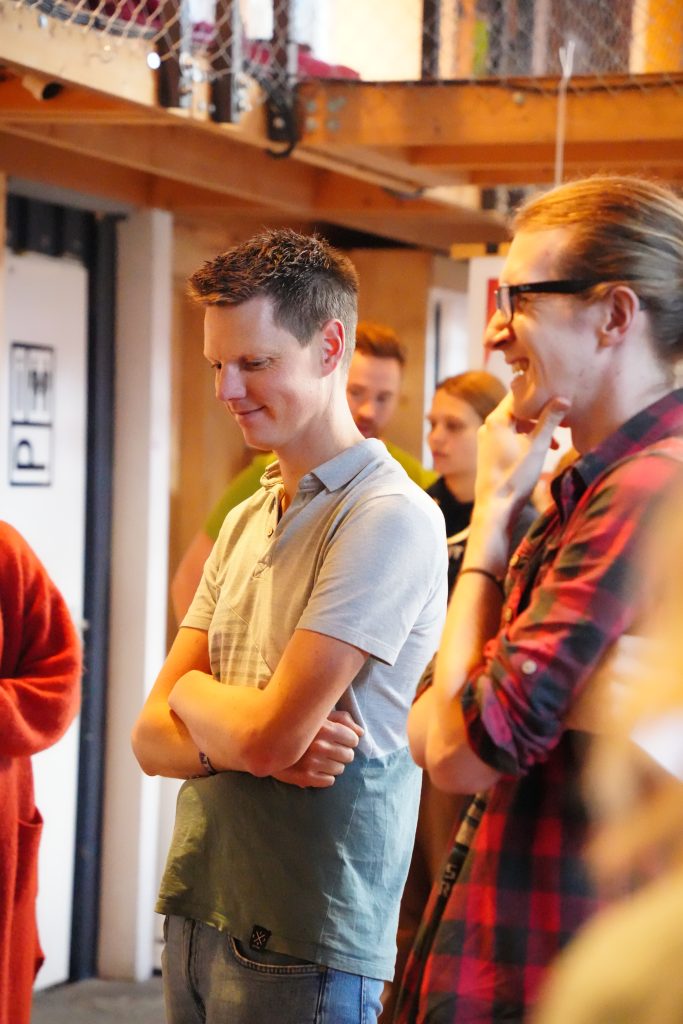

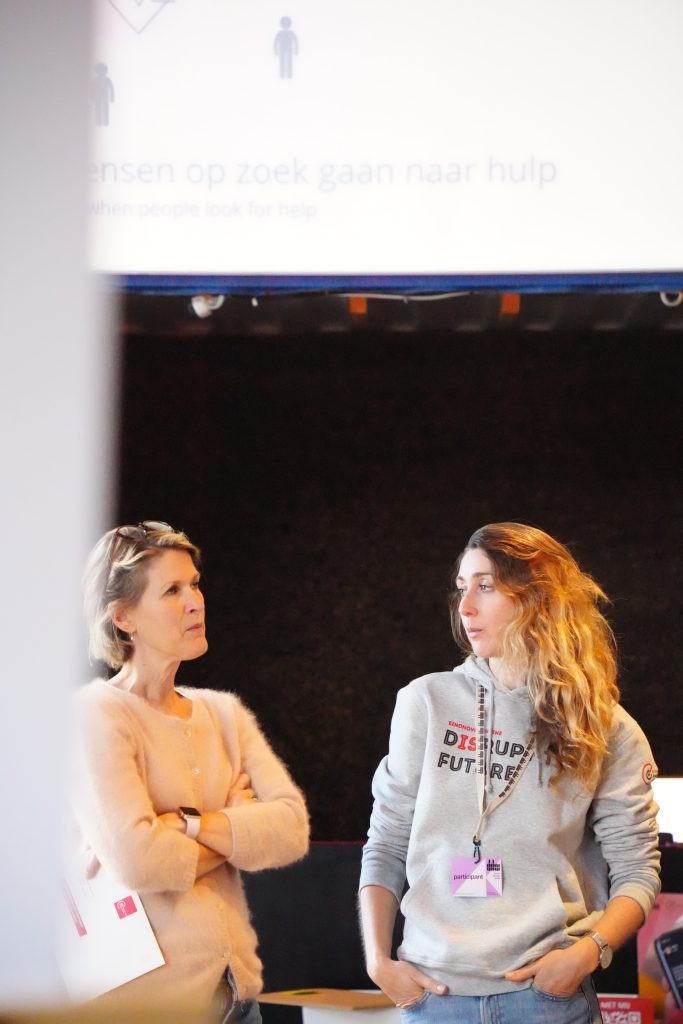
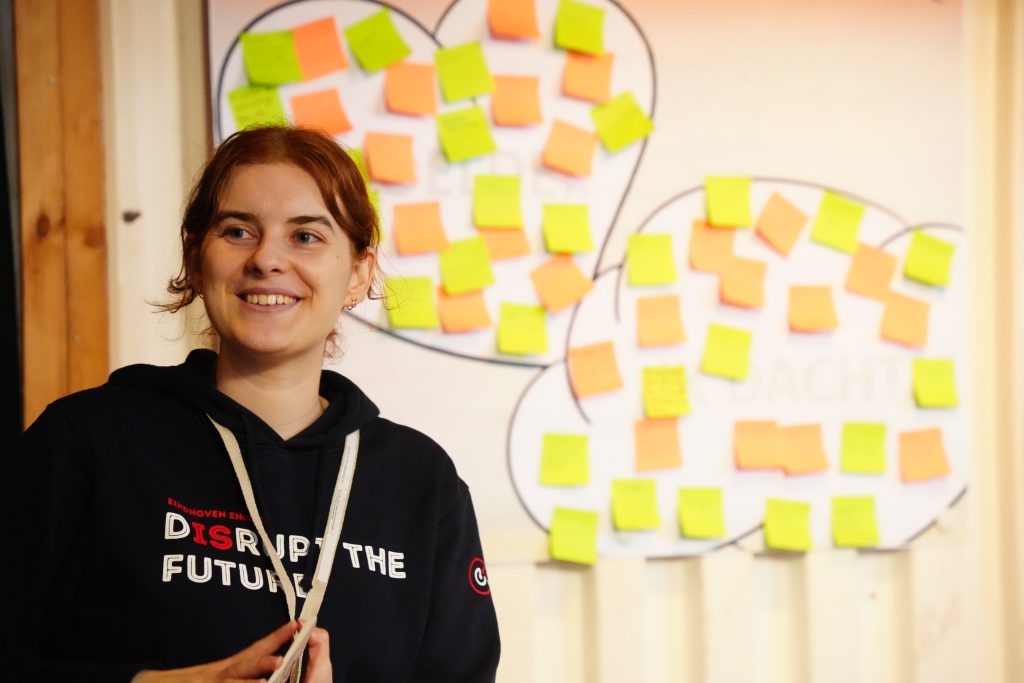
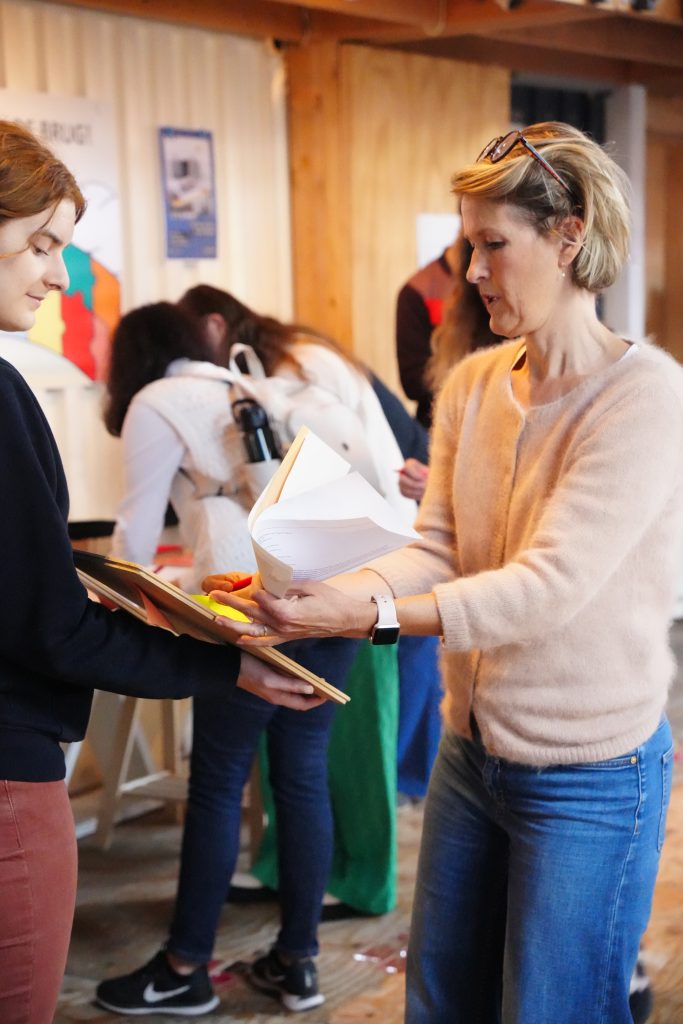
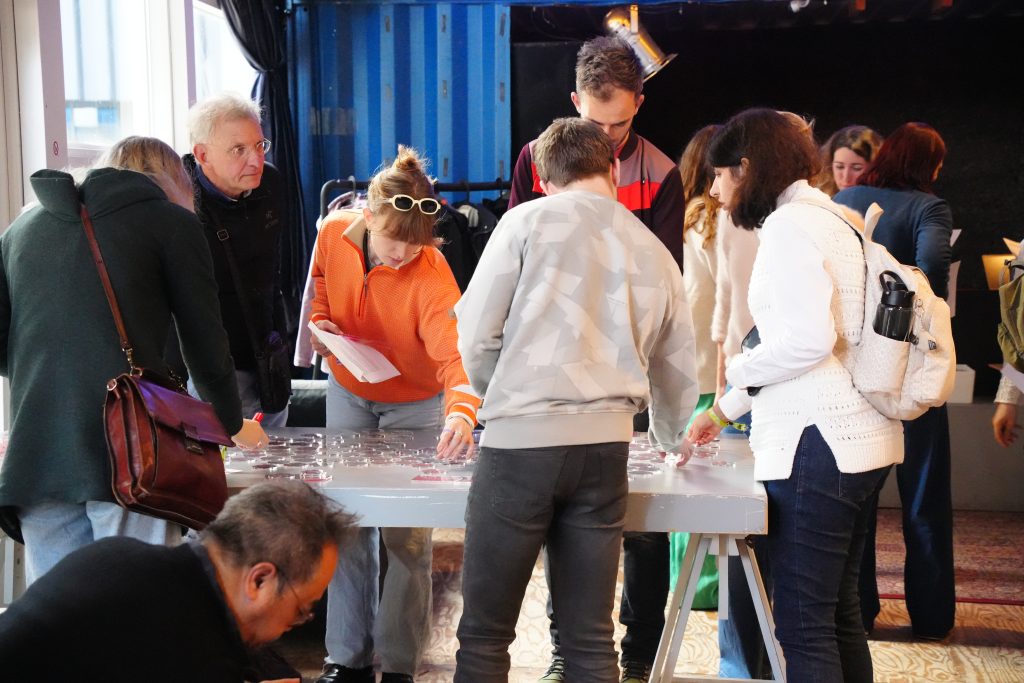
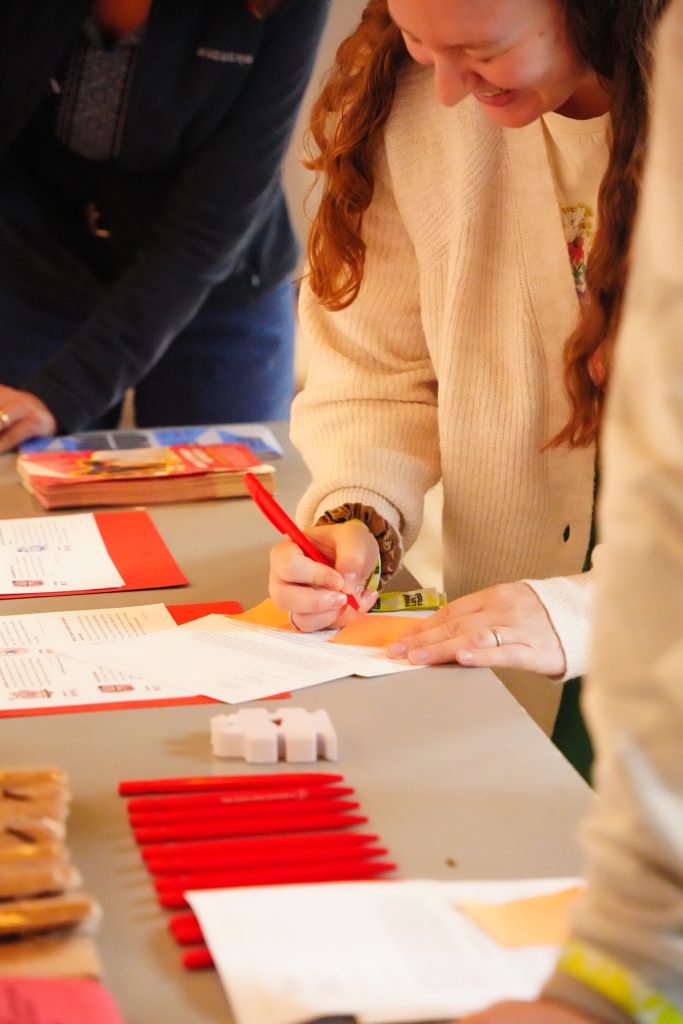
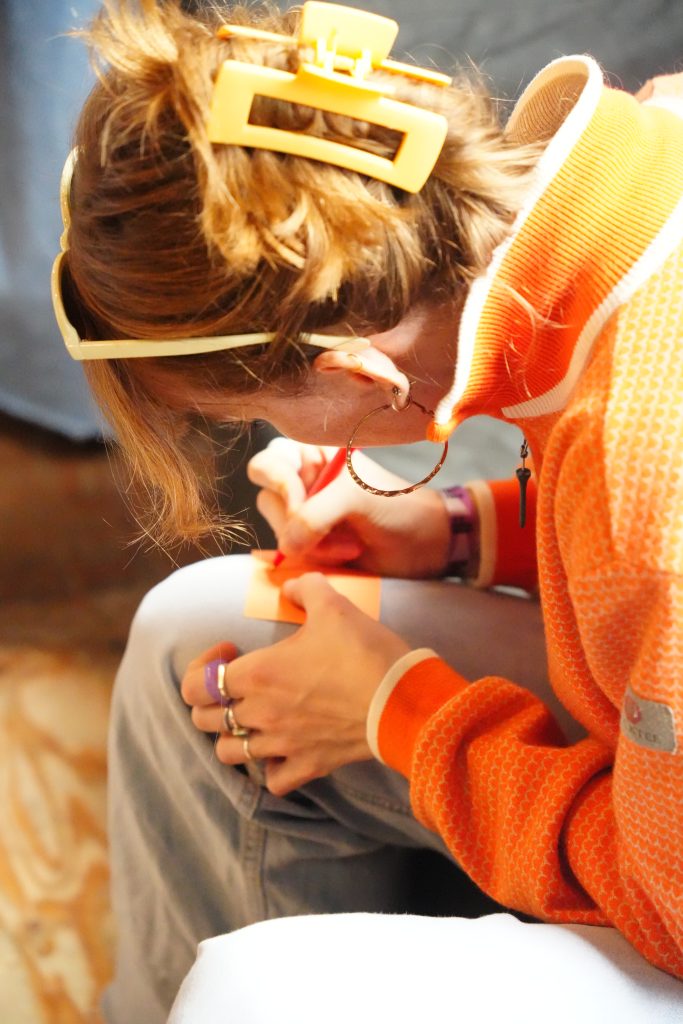
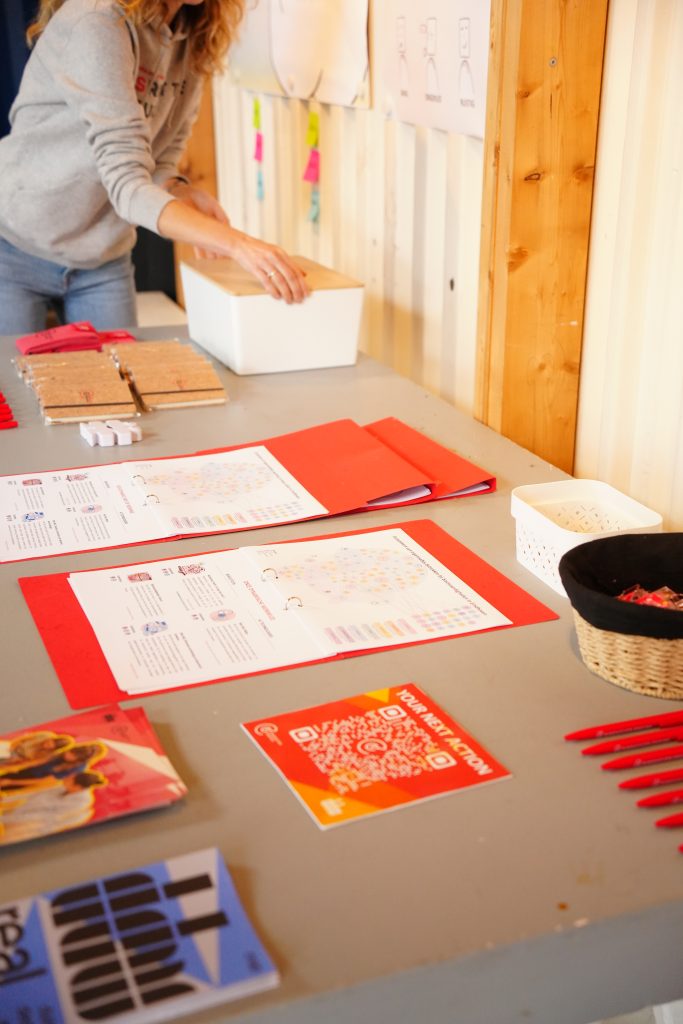
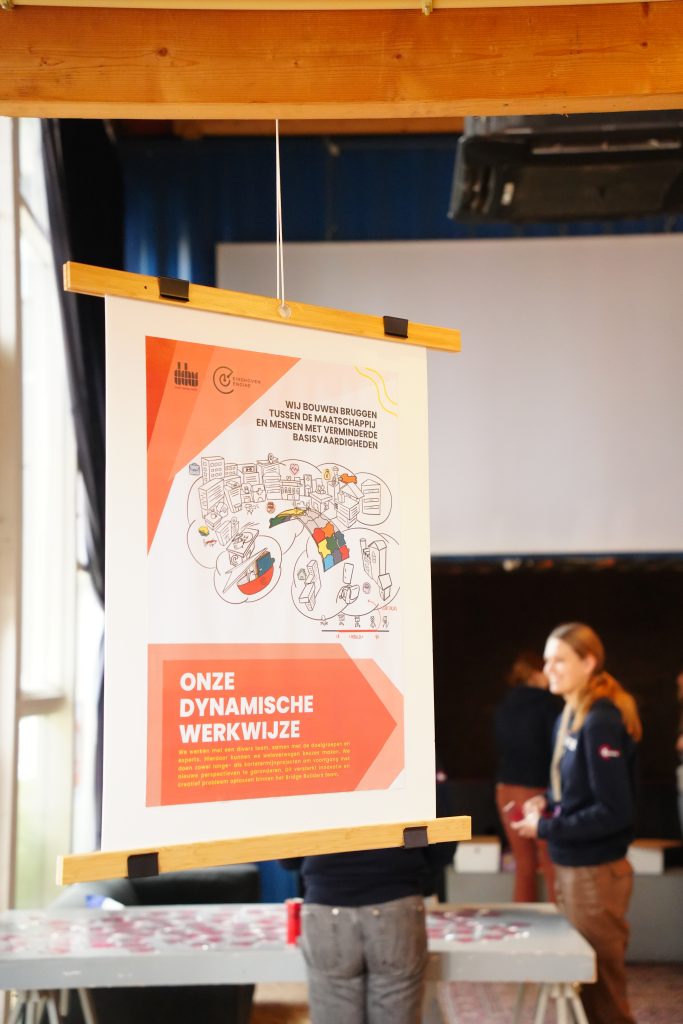
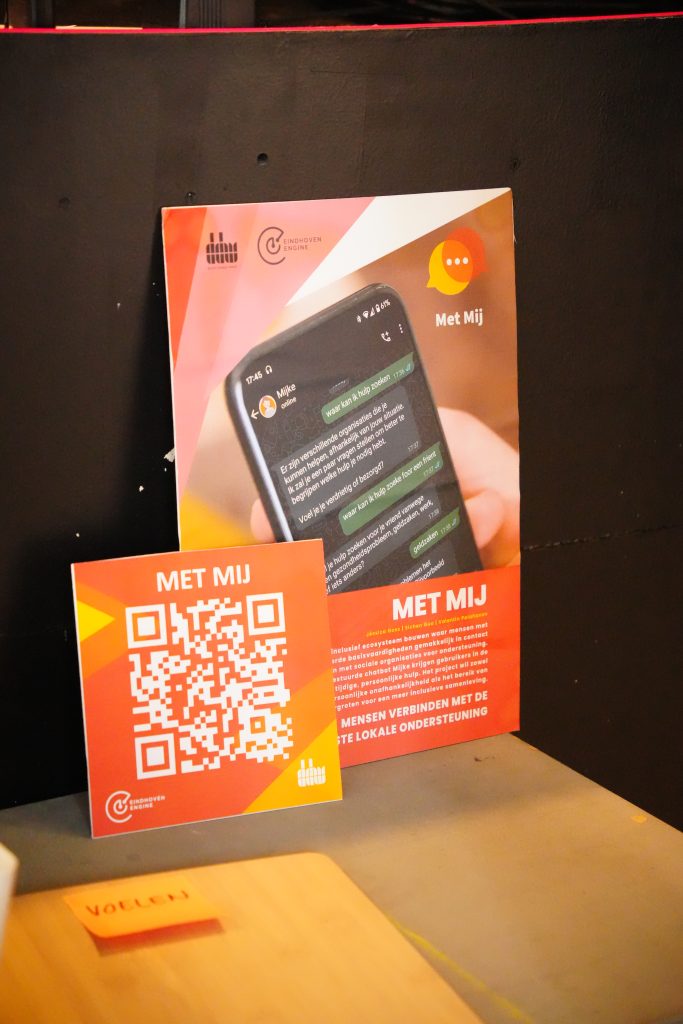
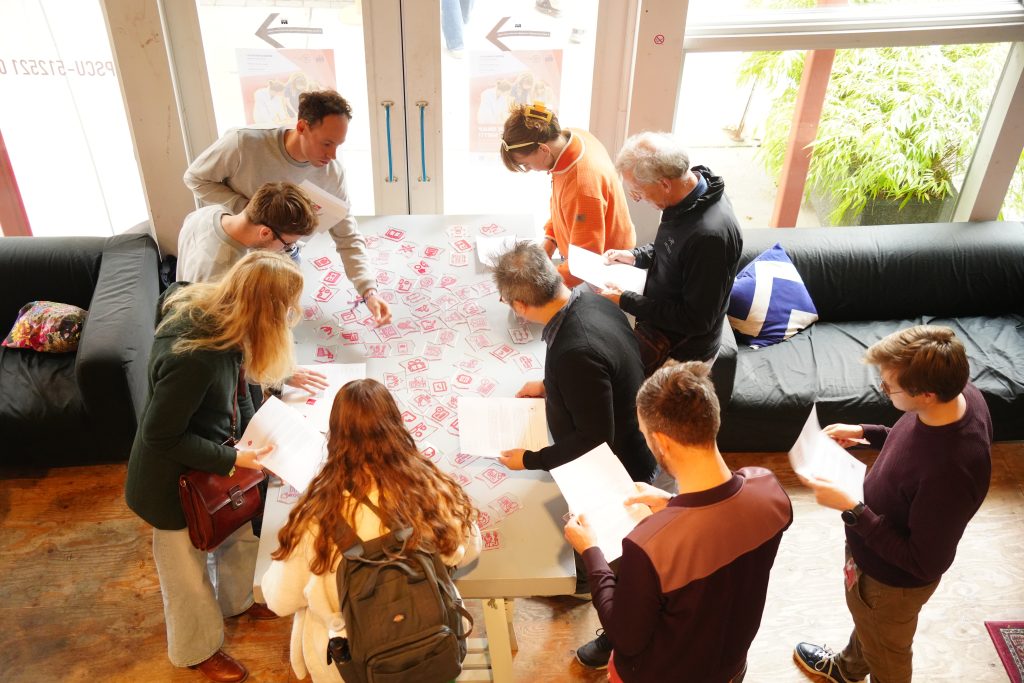
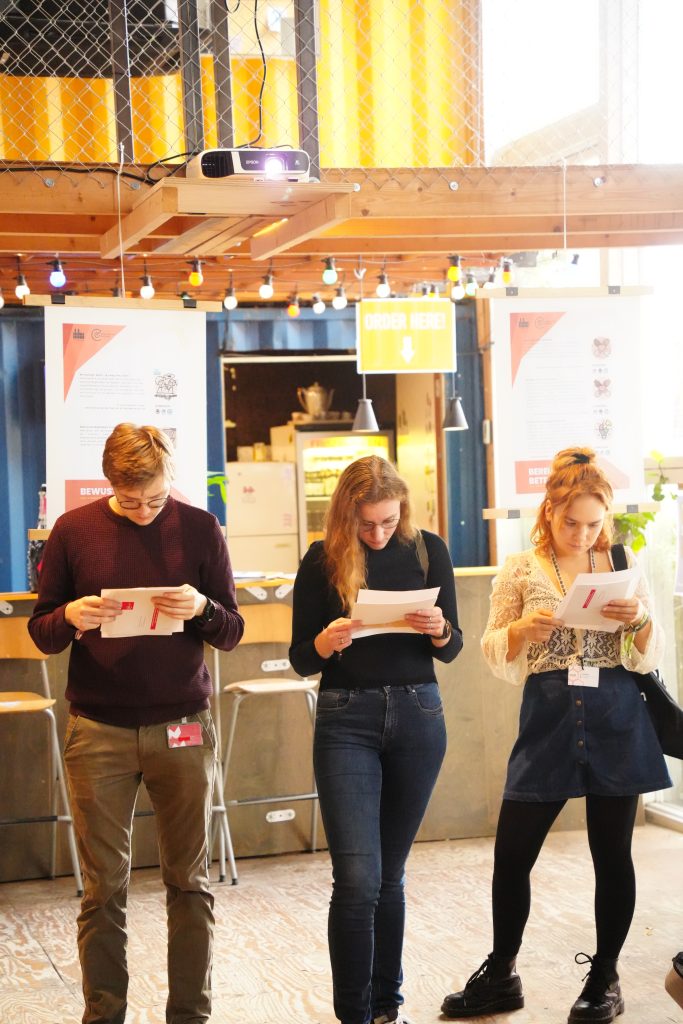
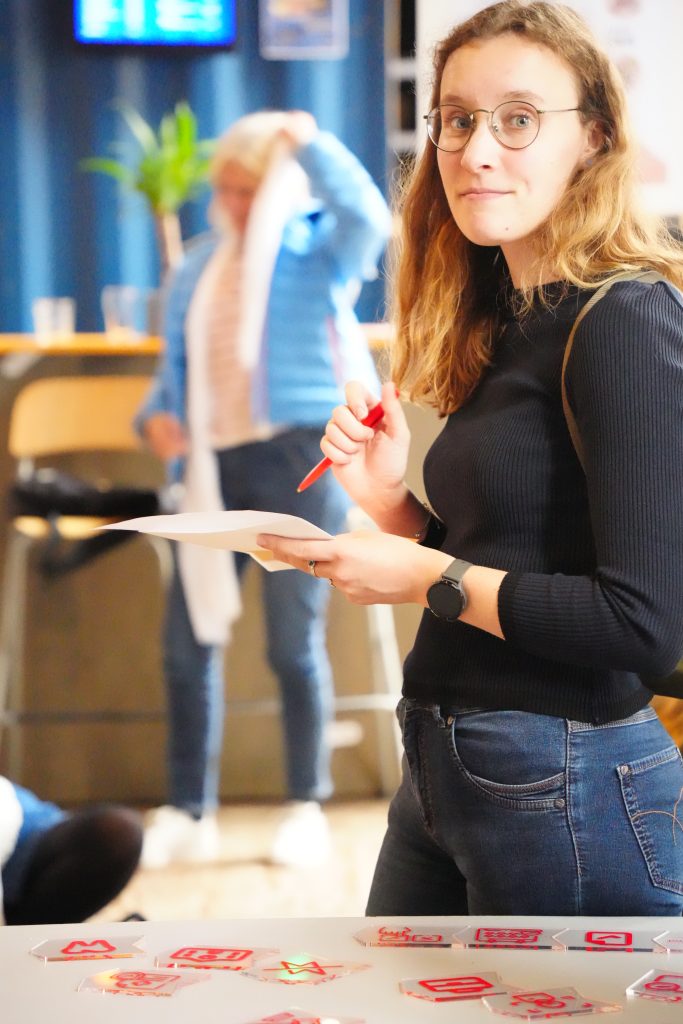
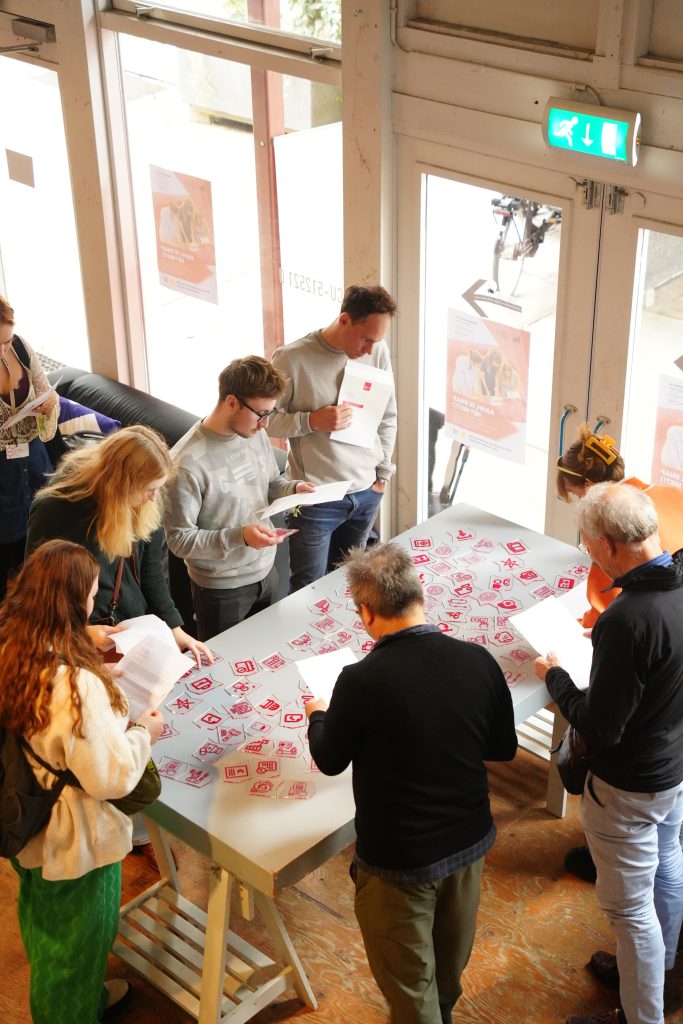
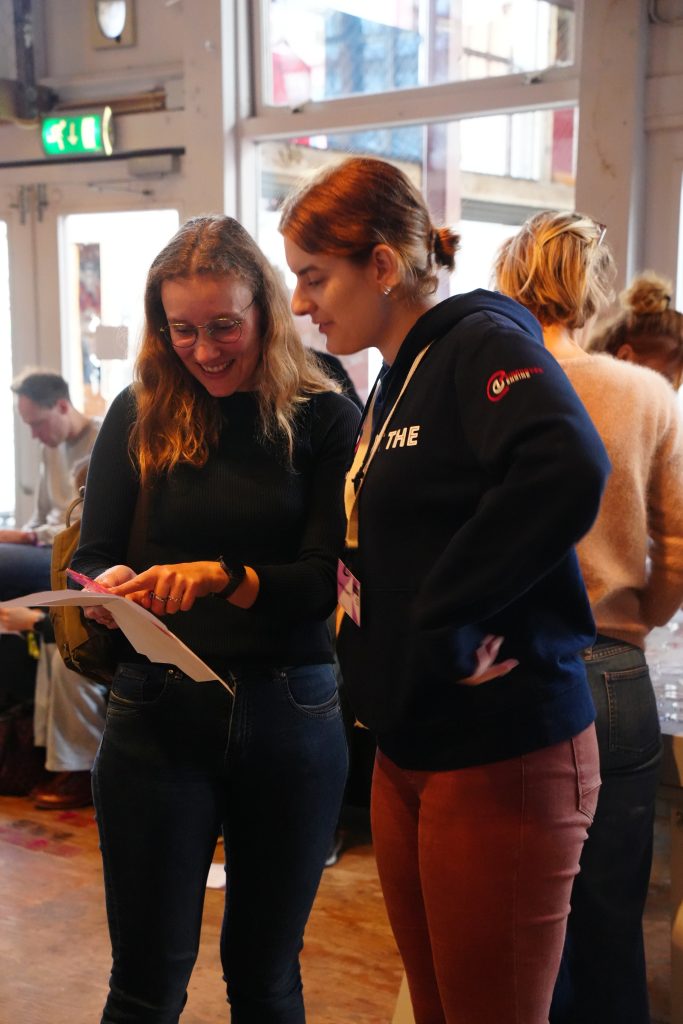
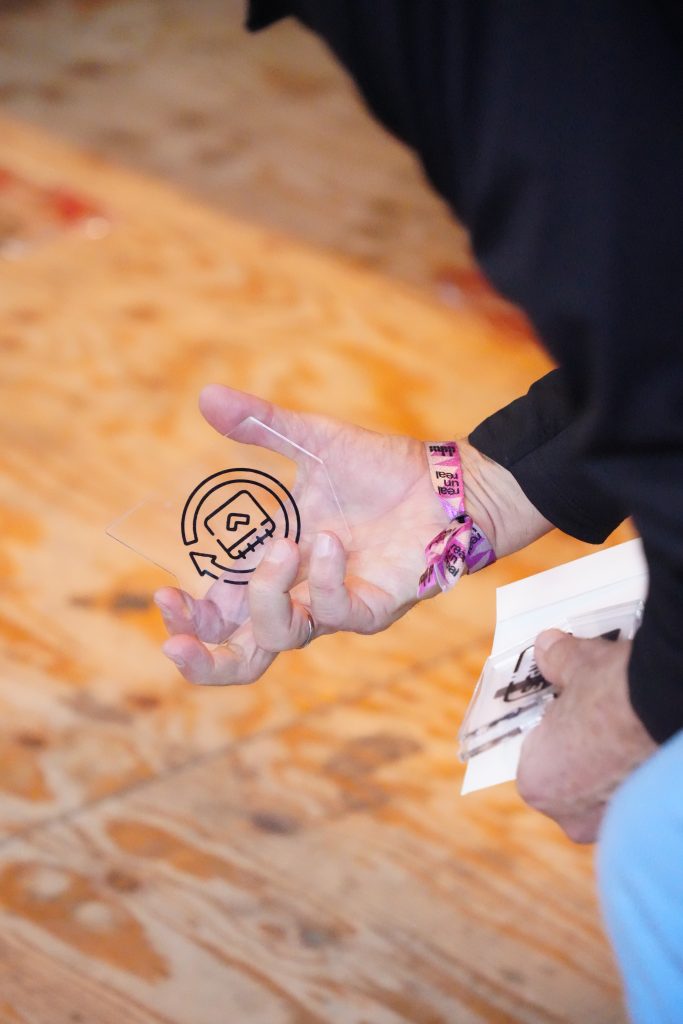
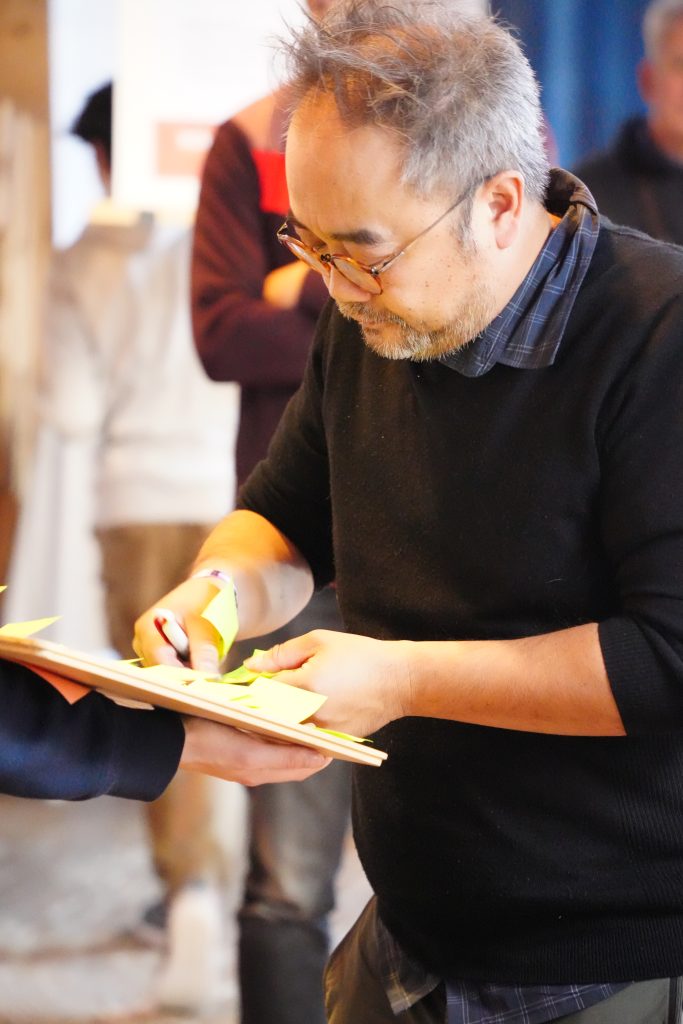

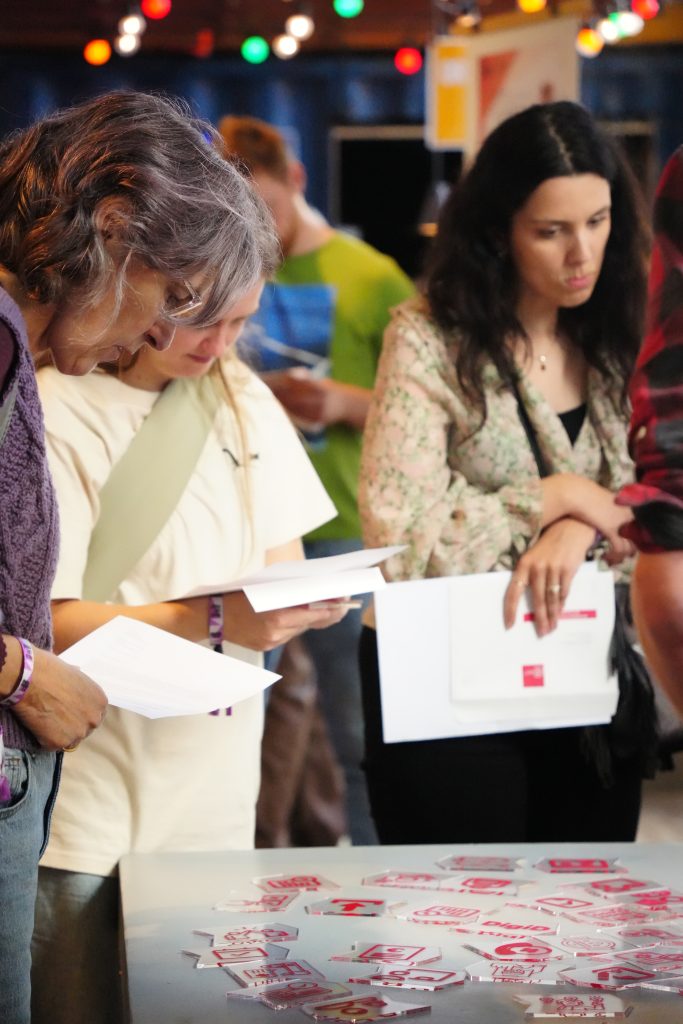
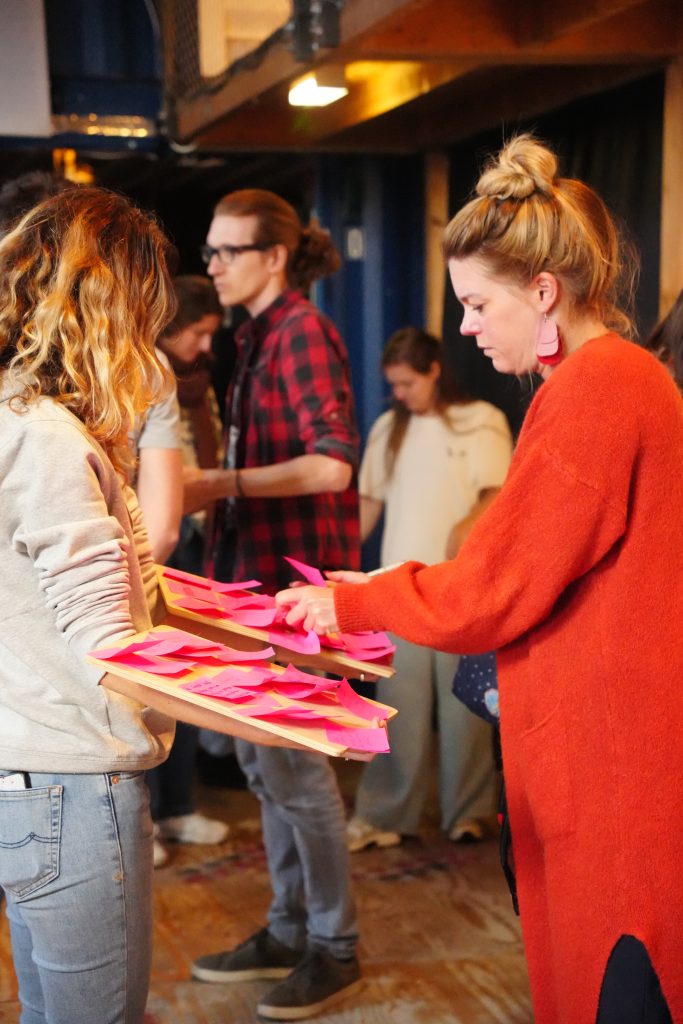
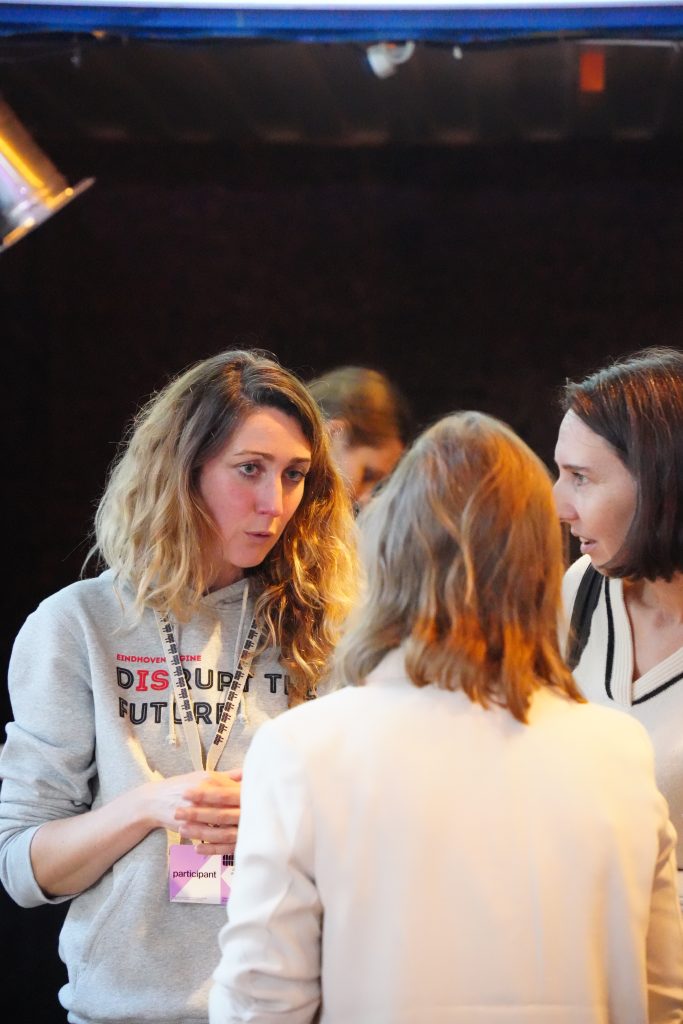

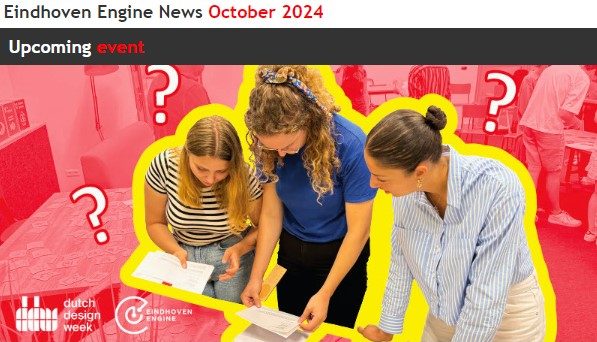
Eindhoven Engine News – October 2024
In this edition of Eindhoven Engine News: our participation in Dutch Design Week 2024 with ‘Aahh, ik snap het niet!! workhop, more about the upcoming Festival of Disruption, and project updates!
What else is happening at Eindhoven Engine?
New project videos: Advanced piezo-electric wafer stage project
Keeping up with the demand for manufacturing growth is the main challenge for the entire semiconductor industry. The Eindhoven Engine OpenCall project ‘Advanced long-range piezo-electric wafer stage’ therefore aims to demonstrate the feasibility of an ultra-short stroke stage using lightweight and compact piezo-electric actuators.
Ron de Bruijn – PhD candidate TU/e
My research is about wafer stages that are driven by piezoelectric actuators. These actuators make a mechanical contact between the rest of the machine and the wafer stage. Minimal disturbance or vibration in the rest of the machine could actually affect a wafer position.
Gregor van Baars – Projectlead TU/e & Systems engineer TNO
ASML is extremely successful with their current technology. The question lies in how much room there is for expansion. This research begins from a completely different standpoint, offering significant advantages but also presenting numerous challenges.
ThinkWave: empowering innovation, one move at a time
Hi, I’m Kay Smits (23 years old), a business innovation graduate now pursuing a master’s in data science and working one day a week at Eindhoven Engine. For my bachelor’s thesis, I explored the ever-evolving field of innovation management and how we can better measure and stimulate innovation processes. This journey led me to Eindhoven Engine, where I had the exciting opportunity to dive deeper into what really drives successful innovation.
A strategic platform
After months of research into factors like technology push, market pull, and open innovation, I developed ThinkWave – a virtual tool that brings together the best methods to manage and stimulate innovation. It’s more than just a game; it’s a strategic platform where technology meets market demands and collaboration opens doors to forward-thinking solutions.

Unique innovation journey
Why am I sharing this? Because ThinkWave isn’t just about theory – it’s about practice. It helps you navigate your unique innovation journey, offering a flexible, structured framework. Think of it as a playground where ideas are organized, visualized, and challenged to grow beyond traditional boundaries. The tool allows you to customize your approach based on your project’s needs, helping you identify which strategies can truly drive impact.
ThinkWave: unlocks new ways to manage and stimulate your innovation journey.
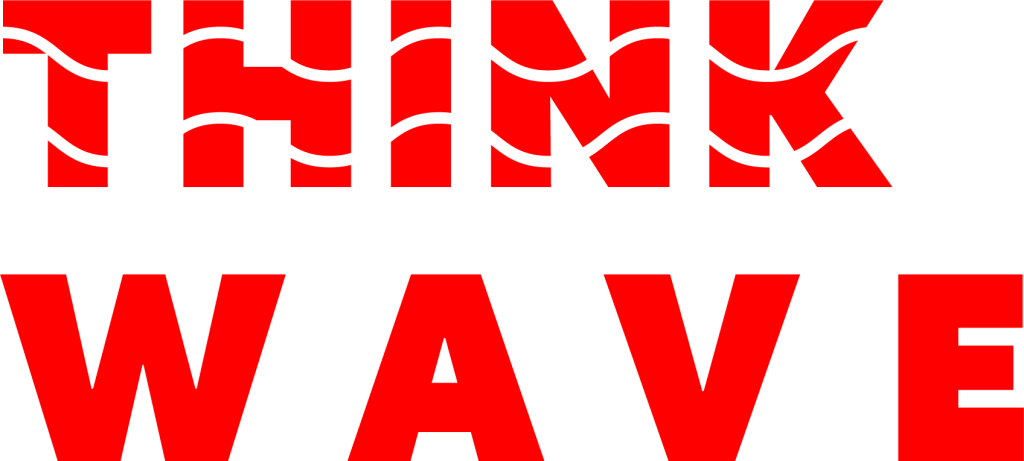
The biggest difference in your innovation process
Our goal at Eindhoven Engine is simple: to help you pinpoint where we can make the biggest difference in your innovation process. We’re committed to contributing to durable, future-proof, startups and organizations, and ThinkWave is just one way we’re doing that.
Are you ready to challenge your innovation process? Let ThinkWave take you further. Do you want to know more about this innovation tool? Please contact Kay Smits at k.smits@tue.nl
New students at Eindhoven Engine
In September, six talented students from Fontys, Avans, and TU/e joined Eindhoven Engine. They will contribute to our four key programs:
- Sustainable Semicon
- Future-Proof Care
- Inclusive Society
- and Livable Region.
Their mission? To devise innovative solutions to significant societal challenges, directly impacting our region. With their fresh perspectives and creative energy, they are set to turn theory into practice and bolster our mission.
In their first week, the students were immediately tasked with tackling issues within their respective pillars, generating their initial ideas. The first mini demo day showcased the students’ inspiring viewpoints and innovative thinking!
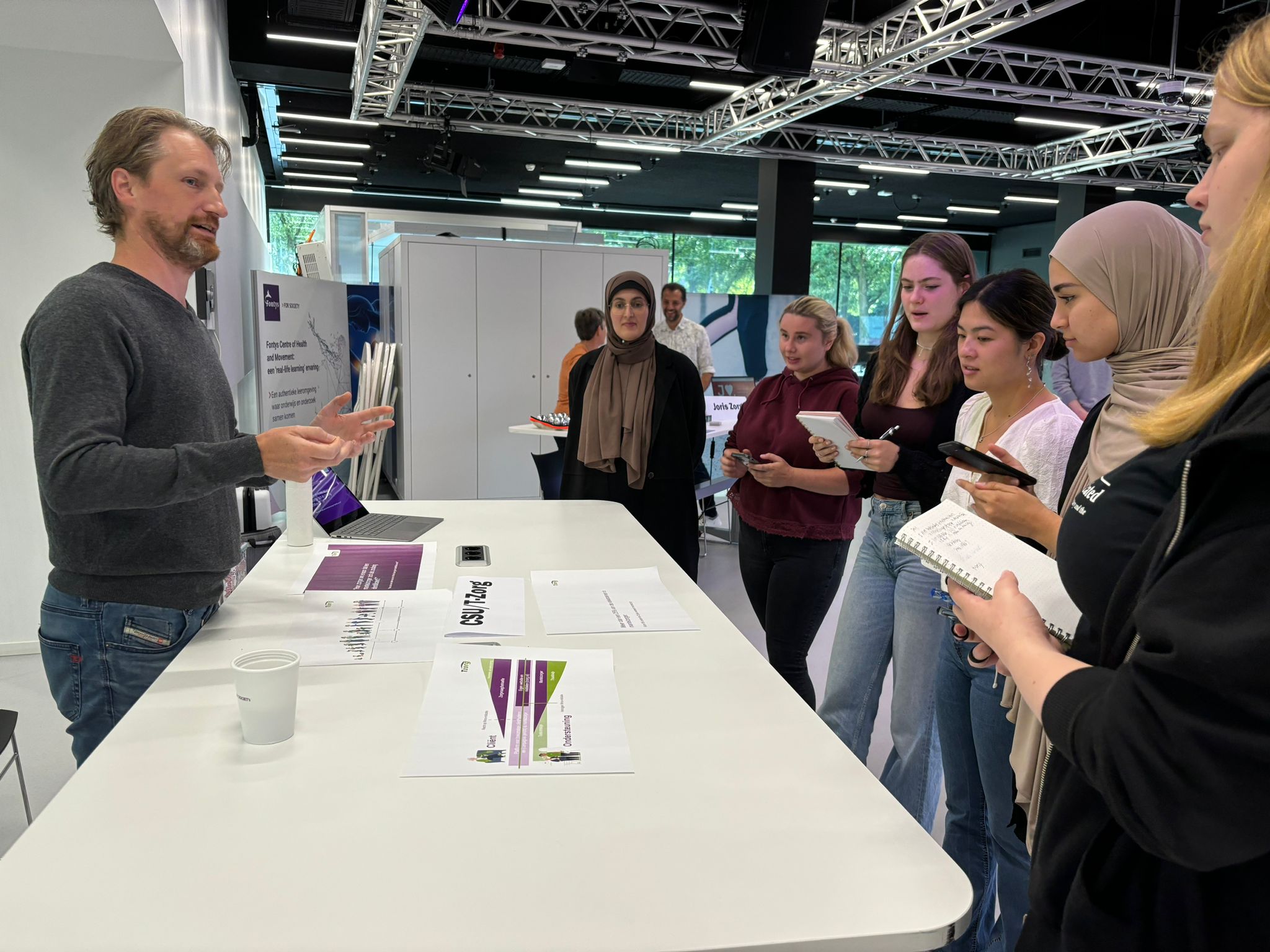
More students
Fontys Crossover Lab
In the Fontys Crossover Lab, 25 students are taking on the challenge of addressing a significant social issue. By thinking and acting radically, utilizing system analysis, and adopting a multi-disciplinary approach, they are working within the Inclusive Society framework. Each group aims to develop a design, proposal, or recommendation that addresses the complex problem of the lack of basic skills.
Our Bridge Builders team provides weekly inspiration and feedback, guiding the students throughout the project. Their efforts will culminate in a final exhibition at Fontys in November.
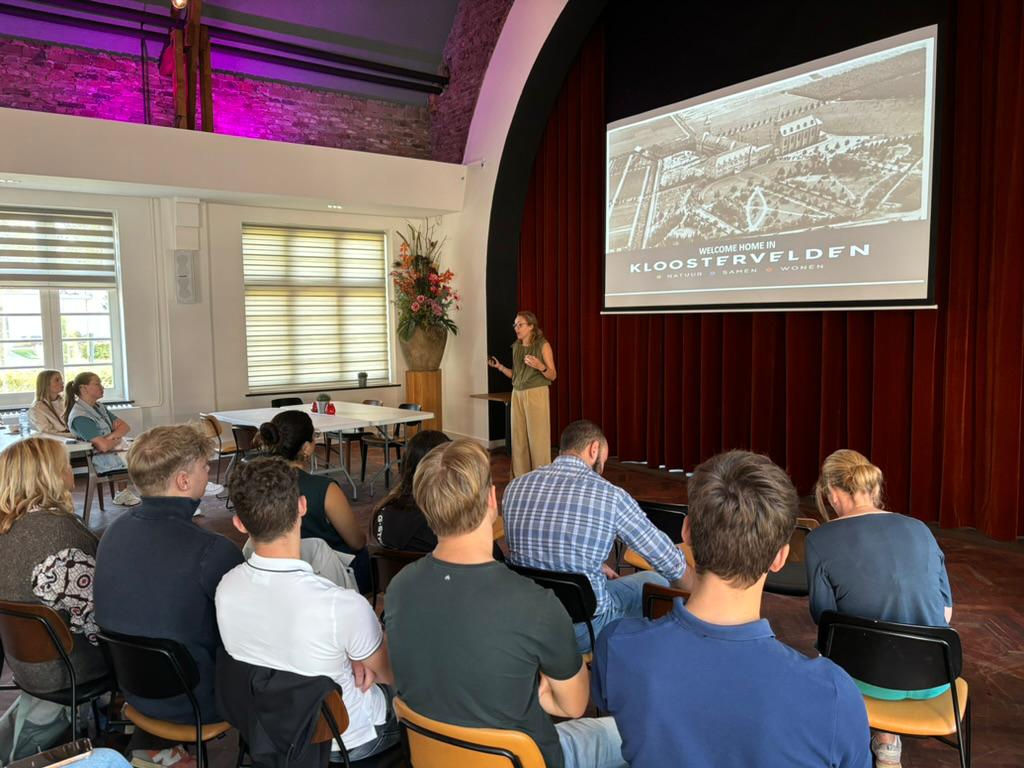
Project from Kempenhaeghe
Another 19 students have started at Eindhoven Engine. These students from Fontys Paramedic and Avans Business Innovation took up a challenge from Kempenhaeghe, a center of expertise for complex epilepsy, sleep disorders and neurological learning and developmental disorders, to strengthen the involvement of the community in care for residents of Kloostervelden, a neighborhood in the village of Sterksel, Noord-Brabant. In this neighborhood residents of Kempenhaeghe live together with regular residents of Sterksel .
This challenge provides multiple learning components for the students, addresses current challenges in specific domains for the clients, and contributes to Eindhoven Engine’s mission to tackle the larger ‘wicked problem’ of making healthcare in the Netherlands future-proof.
The program spans multiple years, with research results being handed over to new groups of students in a relay-like manner, ensuring a sustainable impact.
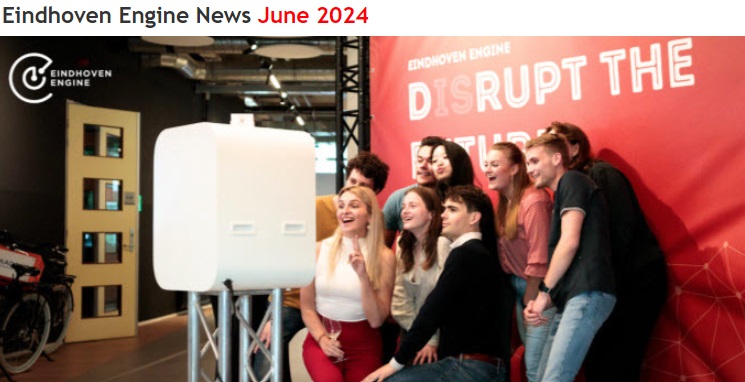
Eindhoven Engine News – June 2024
In this edition of Eindhoven Engine News: Towards a more inclusive society to raise awareness of basic skills gaps, 5 years of Eindhoven Engine, Innovator in the Spotlight Devansh Kandpal & more!
What else is happening at Eindhoven Engine?
Towards a more inclusive society to raise awareness of basic skills gaps
In the Netherlands, 2.5 million people struggle daily with reading, writing, math, and digital skills, also called basic skills. These deficiencies make it difficult for them to fully participate in society, such as reading and understanding a letter or buying a train ticket, leading to various personal and societal problems.
Eindhoven Engine’s initiative
In late 2021, Eindhoven Engine began investigating this issue as part of its mission to accelerate innovation to solve societal challenges. It quickly became clear that this is a wicked problem – a complex issue that is difficult or even impossible to solve due to incomplete or contradictory information in an ever-changing context. This problem, people with a lack of basic skills, is also present in the Brainport region, where the gap between society and people with reduced basic skills is widening. As part of the Brainport region, Eindhoven Engine feels responsible for tackling this problem in collaboration with others, including the Eindhoven Library and the Municipality of Eindhoven.

Fragmented support system
During the exploratory phase, it became apparent that there are many support agencies in our region, but there is no clear overview of these agencies. Moreover, people with reduced basic skills often feel ashamed, which makes them hesitant to seek help. This issue is frequently overlooked, even by social workers, because we are not aware that a lack of basic skills underlies the problems for which they seek help.
Within the Emergence Lab of Eindhoven Engine, TU/e Industrial Design student Inge Hootsmans conducted research during her final master’s project into this issue. She mapped the network of support agencies and discovered that the landscape is highly fragmented, people with reduced basic skills does not know which agency to turn to for their specific needs.

In the Netherlands, support for people lacking basic skills up to 18 years old is accommodated in the educational systems. For those aged 18-40, support is found by people with a background in NT2 (non-native Dutch speakers) as the reach out to the support themselves. People over 40 find it seemingly easier to seek help independently. The group of 18-40-year-olds with an NT1 (native Dutch speakers) appears to be the most difficult to reach. Therefore, Inge chose to concentrate on this group in her research.
Bridge Builders game
To help this group navigate the complex and scattered landscape of support agencies, Inge developed the Bridge Builders game that is designed to raise awareness of basic skills and consist of three steps (see illustration and photos below). The participant starts with experiencing what it is like to have a lack of basic skills. He/she needs to individually find and visualize action points in a letter. Then, step two, the participant will experience what it feels like to seek help in a scattered help landscape: participants need to find a right help institution for their letter. Step three is ‘Take action’. Increasing awareness of the complex societal problem and providing positive incentives to act together: participants are encouraged to reflect critically on their own role in this complex society and take away personal action points directly applicable in their daily and professional life.
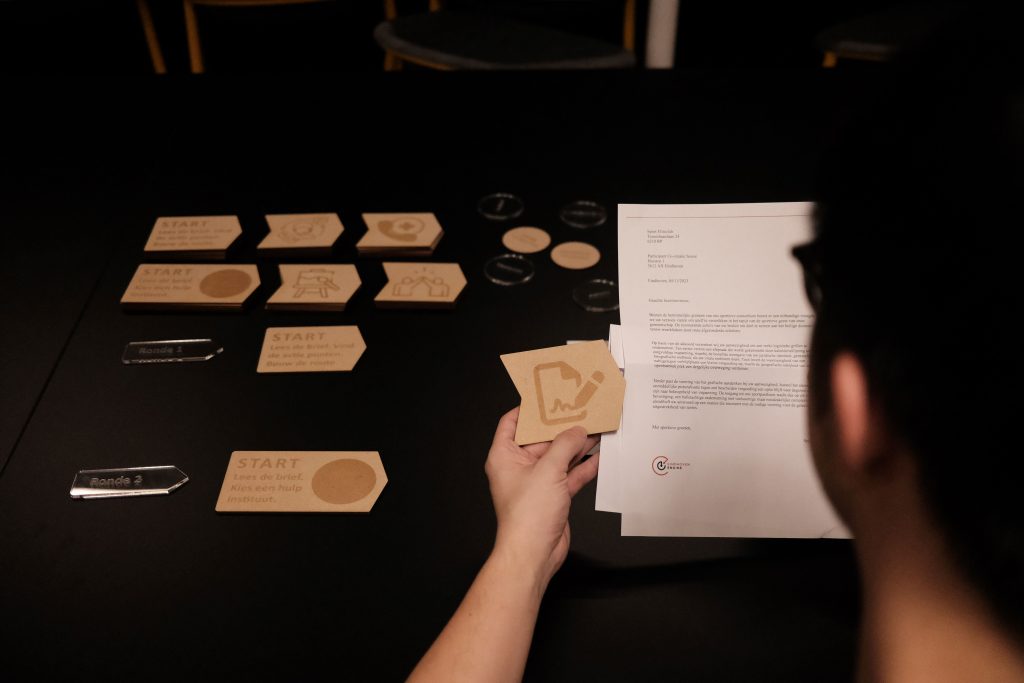
Step 1: experiencing low literacy
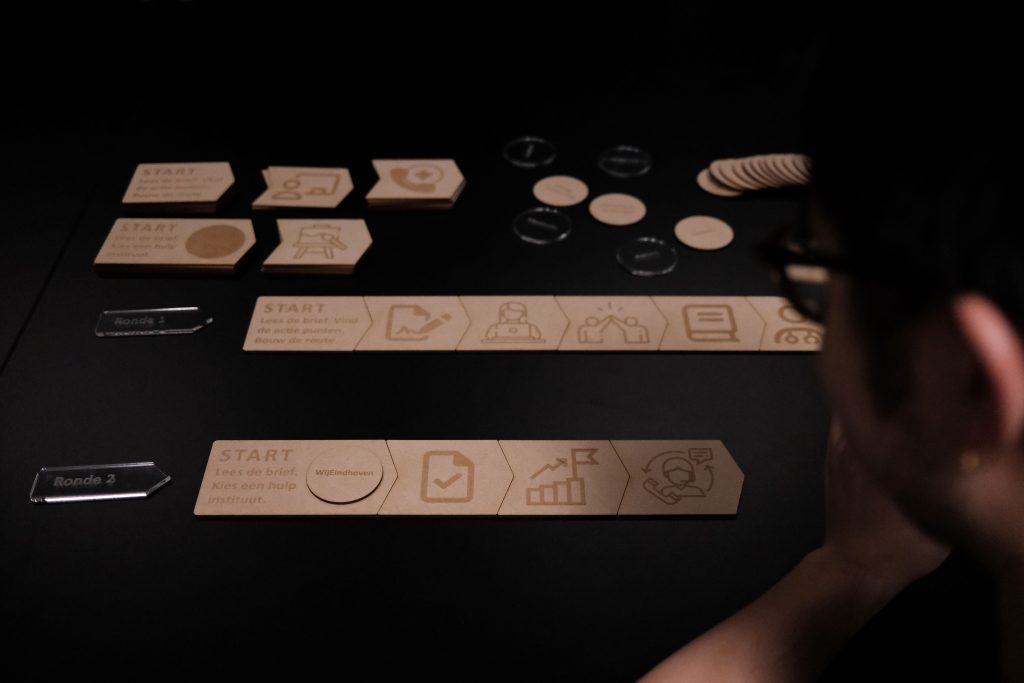
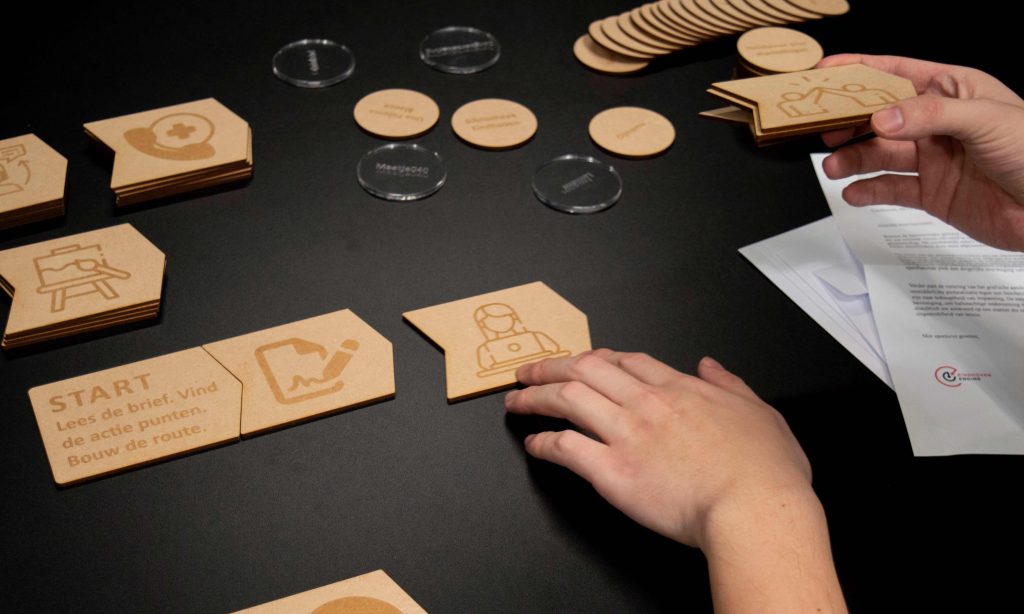
Creating a more inclusive society
Inge extensively tested the Bridge Builders game at events such as the Festival of Disruption in 2023, a thematic session in April 2024, and the High Tech Campus day in June 2024. The letters have also been distributed and used as a trigger in presentations and talks within multiple networks. The responses to the tool were overwhelmingly positive. It allows you to briefly feel the challenges faced by those with reading difficulties.
Together with a team Inge is currently developing the workshop further to raise awareness and get to action among professionals and within their companies, with a call to become a bridgebuilder of an inclusive society by bridging the gap between society and people with a lack of basic skills.
Become a bridgebuilder of an inclusive society by bridging the gap between society and people with a lack of basic skills.
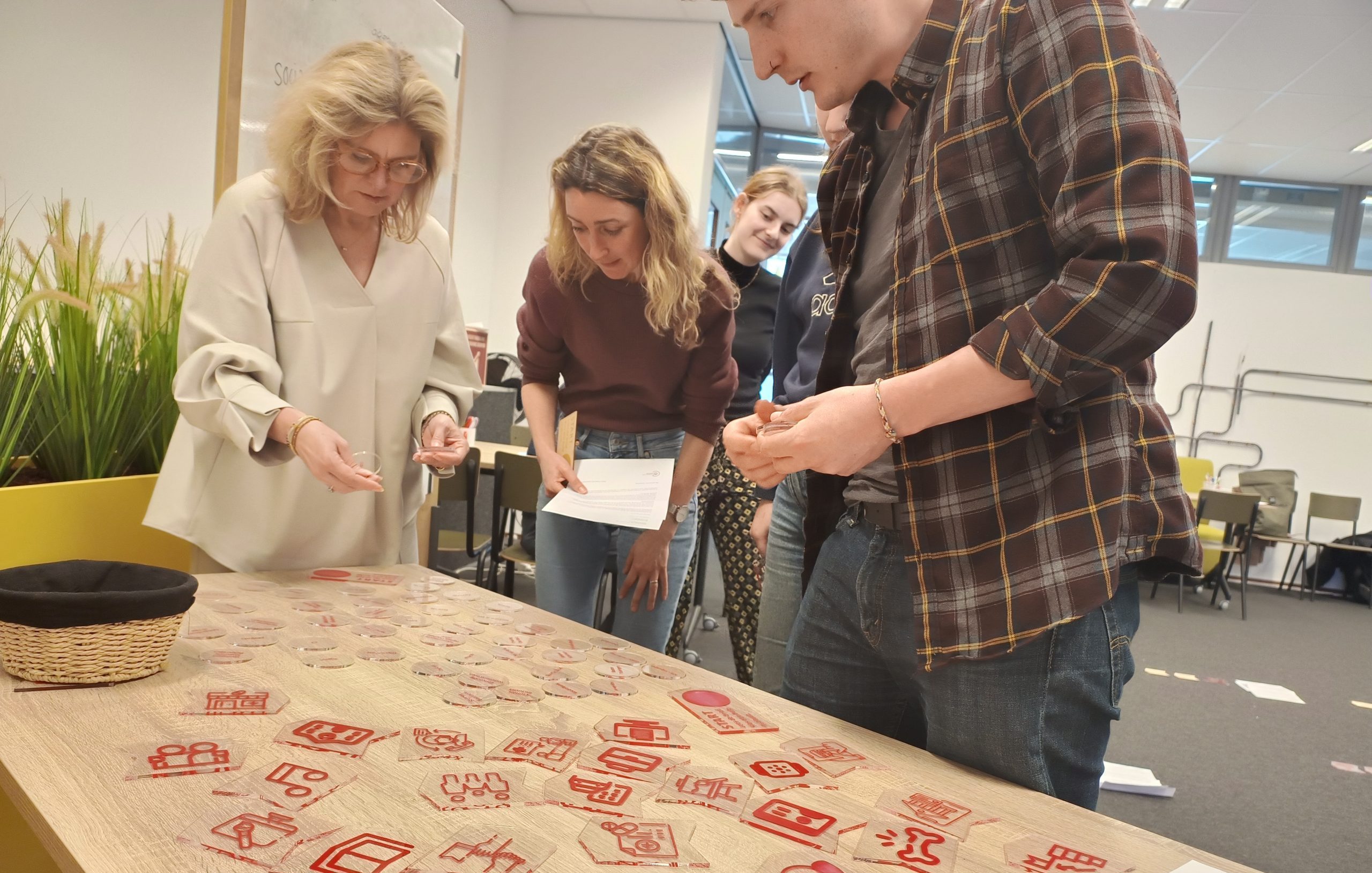
More Information
If you would like to know more or get in touch regarding the Bridge Builders game and/or an inclusive society, please email Inge Hootsmans (Junior Social Designer Inclusive Society) or Merel Notten (Project Leader Inclusive Society). Together, we can work towards a more inclusive society!
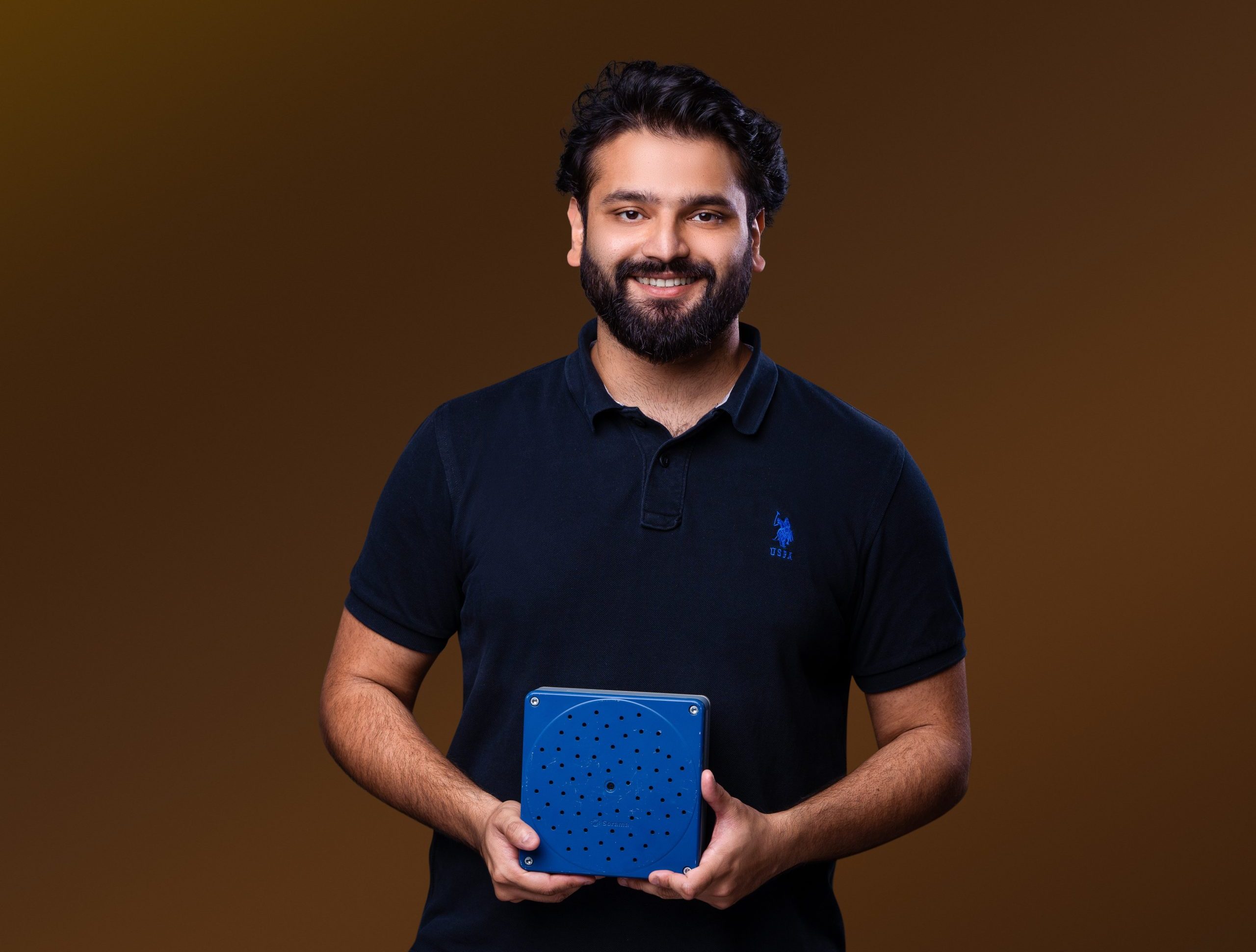
Tackling Europe’s Invisible Health Threat
Hi, my name is Devansh Kandpal. I’m 27 years old and I’m an Acoustics R&D Engineer at Sorama as well as an EngD trainee in Smart Buildings and Cities at TU/e.
Noise pollution is one of the largest contributors to poorer health in the European Union (EU). Disturbance of sleep due to environmental noise leads to the loss of millions of hours of sleep, which is directly responsible for added stress and poorer quality of life for residents of the EU. Addressing this issue, the OpenCall project VIPNOM has been conceived to develop advanced methods for noise measurement and visualization. VIPNOM, which stands for Virtual Position Noise Measurement, is a consortium between Sorama, TU Eindhoven and ReSound. It represents a convergence of diverse engineering disciplines, all focused on innovating scalable technologies that will revolutionize how noise is measured and visualized across various scenarios. I am pleased to undertake the assignment for my EngD traineeship as part of this project. The focus will be on resolving the inaccuracies identified in noise level recordings.
Revolutionizing stadiums and highways
VIPNOM’s breakthroughs have notably enhanced smart stadiums and highways. By integrating advanced, real-time audio capture algorithms, Sorama’s acoustic monitors can now effectively map noise data. This technology has transformed stadiums into intelligent arenas that utilize noise levels to foster positive fan conduct, thereby ensuring a secure and welcoming atmosphere.
In parallel, these principles have been adapted to monitor vehicular noise on highways. Sorama’s acoustic cameras serve as ‘noise radars’, pinpointing excessively loud vehicles to cultivate a more serene environment. These two applications have been adopted worldwide.
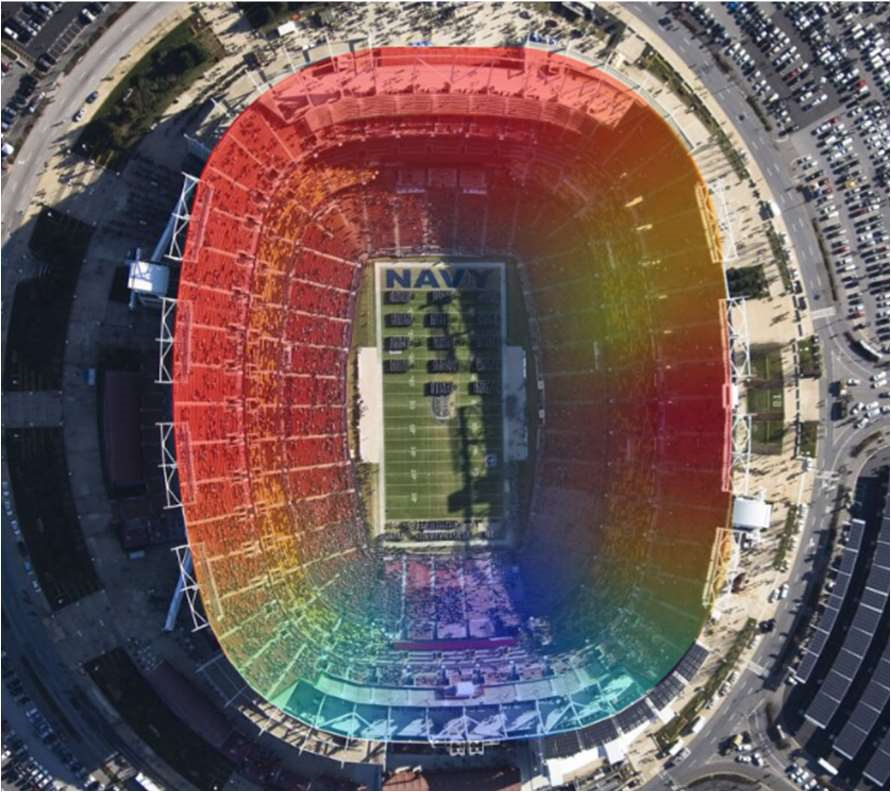
Enhancing accuracy through innovation
In some cases Sorama encounters inaccuracies in noise level recordings due to environmental variables and hardware constraints. The VIPNOM team is proactively addressing these issues through multiple approaches. These include designing predictive machine learning models to compensate for losses, using acoustic models to account for environmental conditions and how noise propagates in the same, and using physics-based compensation solutions for acoustic inaccuracy.
As part of this effort, I focus on crafting digital signal processing (DSP) algorithms essential for calibrating acoustic monitors in expansive venues like sports arenas. My work extends to creating simulations and visualizations that improve the spatial accuracy of beamformers within Sorama’s acoustic monitors, as well as developing transfer functions derived from acoustic modeling to further refine their performance.
A quieter world through acoustic innovation
VIPNOM aims to raise awareness about environmental noise and the health risks that it poses. We aspire to do this by creating new technologies that visualize noise in different ways. We aim to harness collected noise data to create solutions that make the world a quieter and healthier place to live in.
We aim to harness collected noise data to create solutions that make the world a quieter and healthier place to live in.
The Smart Heat Shed, but different
Hi, my name is Jamy de Lange. I am 21 years old, and I am currently finalizing my third year of my bachelor’s degree in Business Innovation.
At the end 2023 I worked on an OpenCall project with TNO and Emergo called the Smart Heat Shed (SHS). The SHS is an innovative storage facility that houses an installation for heating and cooling buildings. My challenge was make the SHS suitable for the housing corporations, so that it could be installed for many houses.
Getting started
The first step was to get a better understanding of de SHS by doing research. On the basis of these insights I was able to make questions for the housing corporations that were were already testing the SHS in practice (at a small scale), which is why I wanted to know about their experiences. The insight I gained from the interviews showed me that there was still some work to do to get de SHS suitable for the housing corporations.
After obtaining insights from my research I organized brainstorm sessions that were focused on the feedback from the housing corporations. I even wanted to try, if possible to use the SHS outside of the housing market (which is totally different than the purpose of which it is built). The results of this made me start to think about an interesting solution. Something that would bring music to everybody’s ears…
New insight
The concept I came up with is focused on applying the SHS to festivals. Further research revealed that some festivals use generators, consuming significant amounts of diesel. Lowlands, for example uses 120,000 liters of diesel to generate electricity. This is why I was certain I had to delve deeper in this direction.
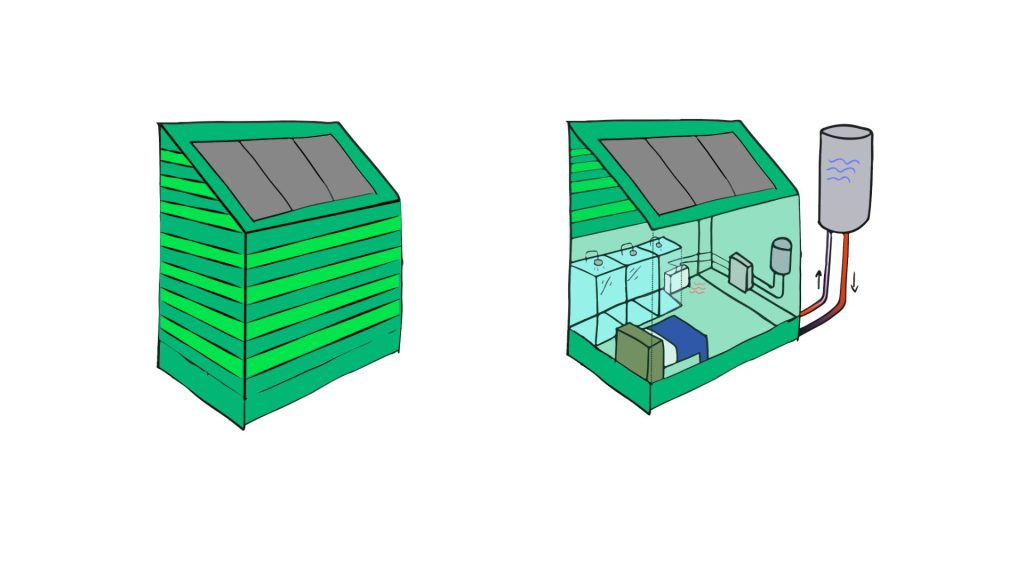
“Some festivals use generators, consuming significant amounts of diesel. Lowlands for example uses 120,000 liters of diesel to generate electricity.”
Smart Heat Shelter prototype
First I came in contact with a stakeholder at Emergo, just to make sure that my concept would be interesting for them. An enthusiastic reaction prompted me to focus on this concept. Later, I send an email to Lowlands, which, to my surprise, was submitted to the director. He provided feedback that gave me insight on adapting the concept for general application to festivals.
The Smart Heat Shelter
After the positive reactions I adjusted the concept based on the feedback given. After this step I tested it again until I had formed my final concept (see prototype picture). I am proud to present to you: The Smart Heat Shelter. This concept allows festivals to lease a certain number of sheds, which can be placed at an available spot. Once installed, the sheds use sunlight to produce heat, which can be used for showers or to heat the sheds when used as accommodation. . The sheds are in different varieties for guests to enjoy different types of stay.
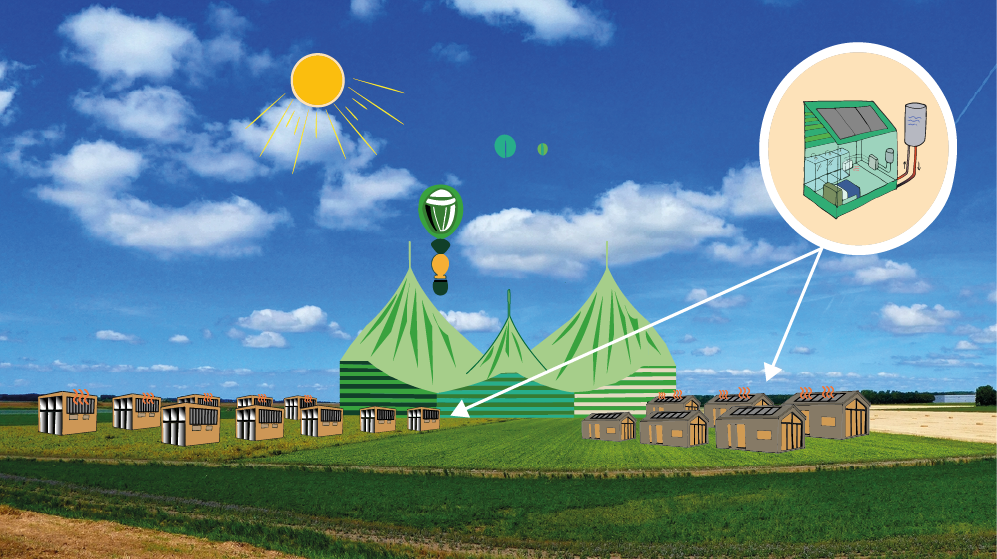
Recently, I engaged with numerous specialists across different sectors, seeking guidance from a business mentor and consulting professionals in eco-friendly (residential) building. Through these discussions, I’m refining my concept to make sure it’s ready for the marketplace.
Should you have any inquiries or suggestions after perusing this article, don’t hesitate to email me at: j.d.lange2@tue.nl
New project videos: POWERLIFT
The OpenCall project Powerlift focuses on enhancing battery packs for unmanned aerial vehicles used in transportation, inspection, emergency services, and security. Through this project, the partners LeydenJar, Tulip Tech, and Wingtra aim to increase the deployment of drones in emergency situations, including organ transplantation, blood transport, professional assistance over long distances, and security purposes.
Battery technology for the future
At LeydenJar, we are working on battery technology for the future. At the moment our battery for a drone can store 70% more energy. Drones can now flying longer distances, lifting off with ease, and exploring more locations. Through our collaboration at Eindhoven Engine with Tulip Tech and Wingtra, we are creating a modular design that allows customizable battery capacity and power—whether it’s a compact pack or a robust one, tailored precisely to each drone’s requirements.
Battery systems with the highest energy density
In project PowerLift we, Leydenjar, Tulip Tech and Wingtra, develop battery systems for industrial drones. As a partner within this project Tulip Tech builds battery systems with the highest specific energy density in the world. That means that the batteries have two to three times more energy per kilogram.
